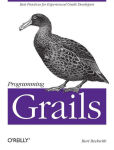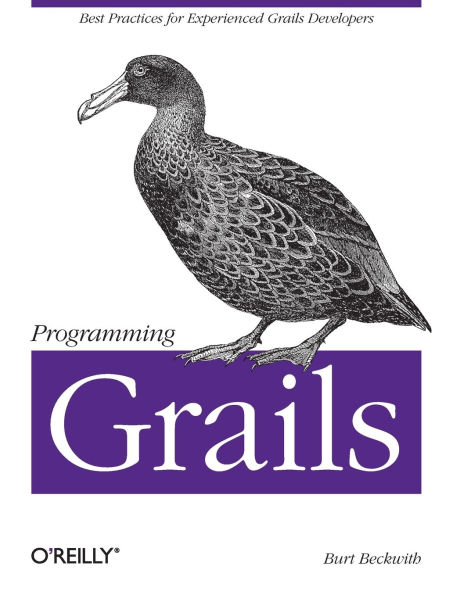Programming Grails: Best Practices for Experienced Grails Developers
Dig deeper into Grails architecture and discover how this application framework works its magic. Written by a core developer on the Grails team, this practical guide takes you behind the curtain to reveal the inner workings of its 2.0 feature set. You’ll learn best practices for building and deploying Grails applications, including performance, security, scaling, tuning, debugging, and monitoring.
1142962879
Understand how Grails integrates with Groovy, Spring, Hibernate, and other JVM technologies, and learn how to create and use plugins to augment your application’s functionality. Once you know how Grails adds behavior by convention, you can solve problems more easily and develop applications more intuitively.
- Write simpler, more powerful code with the Groovy language
- Manage persistence in Grails, using Hibernate or a NoSQL datastore
- Learn how Grails uses Spring’s functionality and optional modules
- Discover how Hibernate handles details for storing and retrieving data
- Integrate technologies for messaging, mail, creating web services, and other JEE technologies
- Bypass convention and configure Grails manually
- Learn a general approach to upgrading applications and plugins
- Use Grails to develop and deploy IaaS and PaaS applications
Programming Grails: Best Practices for Experienced Grails Developers
Dig deeper into Grails architecture and discover how this application framework works its magic. Written by a core developer on the Grails team, this practical guide takes you behind the curtain to reveal the inner workings of its 2.0 feature set. You’ll learn best practices for building and deploying Grails applications, including performance, security, scaling, tuning, debugging, and monitoring.
Understand how Grails integrates with Groovy, Spring, Hibernate, and other JVM technologies, and learn how to create and use plugins to augment your application’s functionality. Once you know how Grails adds behavior by convention, you can solve problems more easily and develop applications more intuitively.
- Write simpler, more powerful code with the Groovy language
- Manage persistence in Grails, using Hibernate or a NoSQL datastore
- Learn how Grails uses Spring’s functionality and optional modules
- Discover how Hibernate handles details for storing and retrieving data
- Integrate technologies for messaging, mail, creating web services, and other JEE technologies
- Bypass convention and configure Grails manually
- Learn a general approach to upgrading applications and plugins
- Use Grails to develop and deploy IaaS and PaaS applications
44.99
In Stock
5
1

Programming Grails: Best Practices for Experienced Grails Developers
344
Programming Grails: Best Practices for Experienced Grails Developers
344Paperback
$44.99
44.99
In Stock

Product Details
| ISBN-13: | 9781449323936 |
|---|---|
| Publisher: | O'Reilly Media, Incorporated |
| Publication date: | 05/14/2013 |
| Pages: | 344 |
| Product dimensions: | 7.00(w) x 9.10(h) x 0.90(d) |
About the Author
From the B&N Reads Blog



